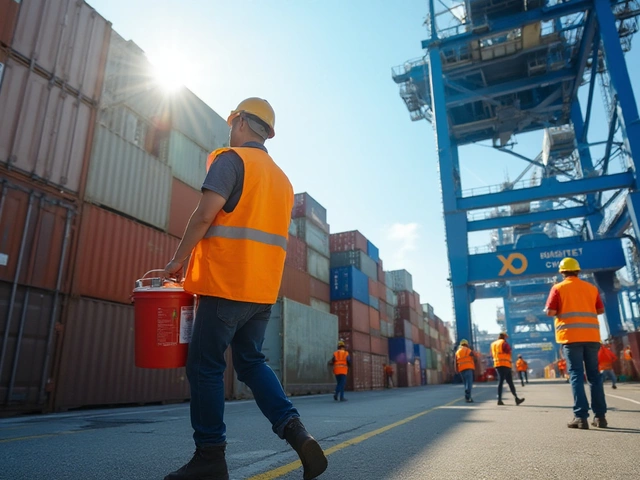Courier License: What It Is, Who Needs It, and How to Get One
Thinking about starting a courier business or expanding your delivery fleet? The first thing you’ll hear about is a courier license. It’s not a fancy badge – it’s the legal permission that lets you haul parcels for money on public roads. Without it, you risk fines, stopped vehicles, and a lot of headaches.
In the UK, a "courier licence" usually means an Operator’s Licence for road haulage or a Standard International Licence for larger vehicles. If you’re moving packages in a van under 3.5 t, you may still need a licence if you’re charging for the service. The rule of thumb: if you’re making money from transporting goods, you need a licence.
Why a Courier License Matters
The licence does three things. First, it proves you meet safety and insurance standards set by the DVSA. Second, it lets you operate across the UK without being stopped by enforcement officers. Third, it gives customers confidence that you run a legit, reliable service.
Without the licence, insurers can pull coverage, and any claim you make may be rejected. That means a single accident could wipe out your business. Staying licensed also keeps you on the right side of HMRC, which can avoid costly investigations.
Step‑by‑Step Guide to Getting Your Courier License
1. Check if you need one. Look at the weight of the vehicles you’ll use and whether you’ll charge for deliveries. If you plan to use a van over 3.5 t or run a fleet, you’ll need an Operator’s Licence.
2. Gather required documents. You’ll need proof of identity (passport or driver’s licence), proof of address (utility bill), a valid PD licence for each driver, and evidence of appropriate insurance coverage. For Operator’s Licences, you also need a road‑worthiness certificate for each vehicle.
3. Register with the DVSA. Go to the GOV.UK site and start the online application. The form asks about your business structure, vehicle details, and operating area. Fill it out accurately – mistakes can delay approval.
4. Pay the fee. The cost varies: around £150 for a small operator, up to £300 for larger fleets. The fee covers the safety inspection and the licence itself.
5. Pass the safety audit. An inspector will check your vehicles, driver qualifications, and record‑keeping procedures. Make sure your vans are serviced, tyres are in good condition, and you have a clear log of deliveries.
6. Receive your licence. Once approved, you’ll get a digital licence and a paper copy. Keep both in each vehicle and display the paper version where it can be seen during checks.
Renew your licence every three years. The DVSA will send a reminder, but it’s wise to start the renewal process early. Keep your insurance up‑to‑date and maintain clean driving records – any serious offense can invalidate the licence.
Need a hand with the paperwork? Dex Removals & Logistics Services offers a simple support package to guide you through the application, check your vehicles, and ensure you stay compliant. Their team knows the ins and outs of the process, saving you time and reducing the risk of errors.
Bottom line: a courier licence is a must‑have if you’re charging for deliveries. It protects your business, builds trust, and keeps you on the road legally. Follow the steps above, stay on top of renewals, and you’ll be ready to grow your courier operation without a hitch.
January 3, 2025
Evelyn Wescott
0 Comments
Navigating the logistics world can be bewildering, especially when it comes to understanding the license requirements for couriers. The need for a license often depends on factors like the type of vehicle used, the nature of the goods delivered, and the region's specific regulations. It's crucial for individuals entering this bustling industry to grasp the legal nuances to operate smoothly. This article delves into various licensing needs for couriers, catering to those pondering a career in delivery services.




